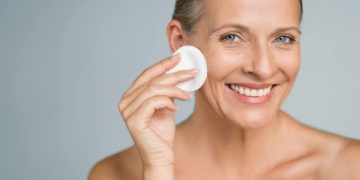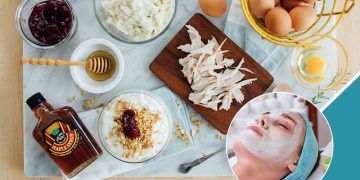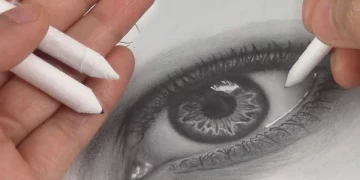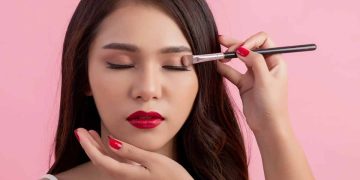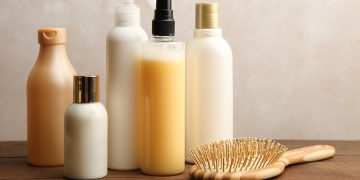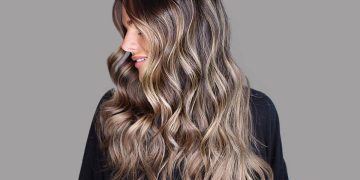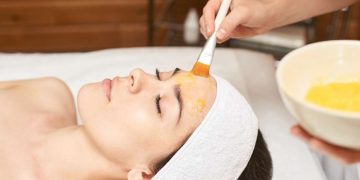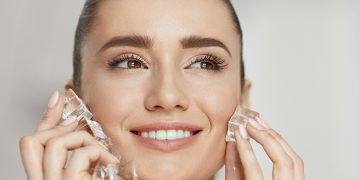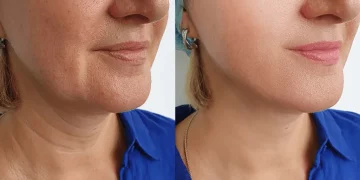Introduction: Causes of Hair Breakage and Its Impact on Growth
Hair breakage is a common issue that many people face, regardless of their hair type, and it can be incredibly frustrating, especially when trying to achieve longer, healthier hair. While it’s normal for hair to shed in the natural growth cycle, breakage is different — it refers to hair strands snapping off prematurely due to damage. This can occur at any point in the hair shaft and usually happens when the hair is weakened, over-processed, or improperly cared for.
Understanding the causes of hair breakage is essential for preventing it and promoting hair growth. Breakage can be caused by a variety of internal and external factors, such as poor hair care practices, nutritional deficiencies, overuse of heat styling tools, and stress. Environmental factors like humidity, sun exposure, and pollution can also contribute to the weakening of hair strands. For many people, hair breakage inhibits growth, as broken hair prevents strands from reaching their full length. Additionally, breakage can result in uneven hair, leaving some areas longer and others shorter.
Fortunately, preventing hair breakage and promoting hair growth is possible with the right care, attention, and habits. In this article, we’ll explore the main causes of hair breakage, provide tips for building an effective hair care routine, highlight the importance of nutrition, and point out common mistakes that hinder hair growth. By following the best practices outlined here, you can help your hair grow stronger, longer, and more resilient.
Hair Care Routine: Gentle Brushing, Protective Styles, Deep Conditioning
One of the most important steps to preventing hair breakage is maintaining a proper hair care routine. A well-rounded hair care regimen ensures that your hair is consistently nourished, protected, and strengthened. Here are the key components of a hair care routine that promotes hair health:
- Gentle Brushing and Detangling: One of the easiest ways to cause hair breakage is through harsh brushing or combing. When hair is wet, it’s more vulnerable to breakage due to its increased elasticity. Always use a wide-tooth comb or a detangling brush designed for wet hair to gently detangle knots. Start at the tips and work your way up to avoid putting too much strain on the roots. Additionally, avoid using excessive force when brushing your hair, as this can weaken strands and cause snapping.
- Protective Hairstyles: Protective hairstyles are those that shield the ends of your hair from damage caused by external factors, such as friction, humidity, and environmental stress. Braids, buns, twists, and updos can help keep your hair contained and minimize the risk of breakage. Protective styles also reduce the need for constant styling, which can further weaken the hair. When wearing protective styles, ensure that they are not too tight, as tight hairstyles can cause stress on the scalp and hair, leading to breakage.
- Deep Conditioning: Deep conditioning treatments are a vital part of any hair care routine, especially if you’re dealing with hair breakage. These treatments penetrate the hair shaft, delivering intense moisture and nourishment that can strengthen weak strands. Regular deep conditioning, at least once a week, helps restore hair elasticity and prevent breakage. Opt for a deep conditioner with proteins like keratin, collagen, or silk amino acids, as these ingredients help repair and reinforce the hair’s structure.
- Avoiding Over-Washing: Washing your hair too frequently can strip it of its natural oils, which are essential for keeping hair hydrated and healthy. When you over-wash, your scalp may become dry, which can lead to hair breakage. Instead, wash your hair 2-3 times a week with a sulfate-free shampoo, which helps preserve moisture and protects the hair cuticle.
- Use of Leave-In Conditioners: Leave-in conditioners are an excellent way to provide continuous moisture throughout the day, especially for those with dry or damaged hair. They create a barrier against environmental stressors, prevent frizz, and help detangle the hair. Choose leave-in products that are lightweight but packed with nourishing ingredients like shea butter, argan oil, or aloe vera.

Diet and Supplements: Nutrients That Promote Hair Strength
What you eat has a direct impact on the health of your hair. Hair growth and strength are closely linked to the nutrients you consume, and deficiencies in certain vitamins and minerals can lead to hair loss and breakage. A balanced diet rich in the right nutrients can provide your hair with the building blocks it needs for optimal growth. Here are some of the most important nutrients that contribute to strong, healthy hair:
- Protein: Hair is primarily made up of keratin, a protein that forms the structural foundation of each hair strand. Consuming adequate amounts of protein is essential for maintaining healthy, strong hair. Good sources of protein include lean meats, fish, eggs, beans, lentils, and nuts. If you follow a vegetarian or vegan diet, be sure to include plant-based protein sources like quinoa, tofu, and edamame.
- Iron: Iron is crucial for hair health because it helps red blood cells carry oxygen to the hair follicles. Without sufficient oxygen, hair growth can be stunted, and hair may become weak and brittle. Iron-rich foods include red meat, spinach, beans, lentils, and fortified cereals.
- Vitamin A: Vitamin A is essential for the production of sebum, the natural oil that moisturizes the scalp and hair. A lack of vitamin A can result in dry, brittle hair that is more prone to breakage. Include vitamin A-rich foods like sweet potatoes, carrots, spinach, and kale in your diet to keep your hair hydrated and healthy.
- Vitamin C: Vitamin C is a powerful antioxidant that helps protect hair from damage caused by free radicals. It also plays a key role in collagen production, which supports the hair’s structure. Citrus fruits, strawberries, bell peppers, and broccoli are all excellent sources of vitamin C.
- Biotin: Biotin, also known as vitamin B7, is a water-soluble vitamin that plays a critical role in the health of hair, skin, and nails. Biotin deficiency is often associated with hair thinning and loss. Foods rich in biotin include eggs, nuts, seeds, sweet potatoes, and avocados.
- Omega-3 Fatty Acids: Omega-3 fatty acids help nourish the scalp and support the hair follicles. They can reduce inflammation and improve hair growth. Sources of omega-3s include fatty fish like salmon, flaxseeds, chia seeds, and walnuts.
- Zinc: Zinc is an essential mineral that supports hair growth and repair. A deficiency in zinc can lead to hair shedding and thinning. Zinc-rich foods include oysters, beef, pumpkin seeds, and lentils.
If you’re unable to get all of these nutrients from your diet, you might consider taking supplements to fill in the gaps. Always consult with a healthcare provider before adding supplements to your routine.
Common Mistakes: Using Heat Tools Too Often, Tight Hairstyles
While a proper hair care routine and a nutrient-rich diet can go a long way in preventing breakage, some common mistakes can hinder progress. By avoiding these errors, you’ll help your hair stay healthy and promote stronger growth.
- Overuse of Heat Tools: Heat styling tools, such as flat irons, curling irons, and blow dryers, can cause significant damage to hair over time. Excessive heat weakens the hair shaft and can lead to breakage. If you must use heat tools, always apply a heat protectant spray beforehand to minimize damage. Additionally, try to limit heat styling to special occasions and embrace your natural texture as much as possible.
- Tight Hairstyles: Tight hairstyles, like ponytails, buns, and braids, can put unnecessary stress on the hair and scalp, leading to breakage and hair loss. Constantly pulling the hair tight can weaken the hair follicles, resulting in traction alopecia. Opt for looser, more protective styles that don’t tug on the hair.
- Rough Towel Drying: Using a rough towel to dry your hair can create friction, leading to breakage and split ends. Instead, use a microfiber towel or an old cotton t-shirt to gently blot your hair dry. Alternatively, allow your hair to air dry when possible.
- Skipping Regular Trims: While it may seem counterintuitive, trimming your hair regularly is essential for preventing breakage. Split ends can travel up the hair shaft and cause further damage if left untreated. A trim every 6–8 weeks helps keep your ends healthy and prevents the breakage from spreading.
Conclusion: Best Practices for Stronger, Longer Hair
Preventing hair breakage and promoting hair growth requires a multifaceted approach, involving gentle care, proper nutrition, and mindful styling. By incorporating a consistent hair care routine that focuses on hydration, protection, and nourishment, you can significantly reduce breakage and support stronger, longer hair. Avoid common mistakes like overusing heat tools and wearing tight hairstyles, and instead, prioritize techniques that promote hair health, such as gentle brushing, protective styles, and regular trims.
Moreover, nourishing your body with the right nutrients—such as protein, iron, biotin, and omega-3 fatty acids—will give your hair the strength it needs to grow long and healthy. Ultimately, patience is key, as hair growth is a gradual process that requires consistency and time.
With the right practices in place, you can say goodbye to breakage and hello to vibrant, healthy hair that grows to its full potential.



